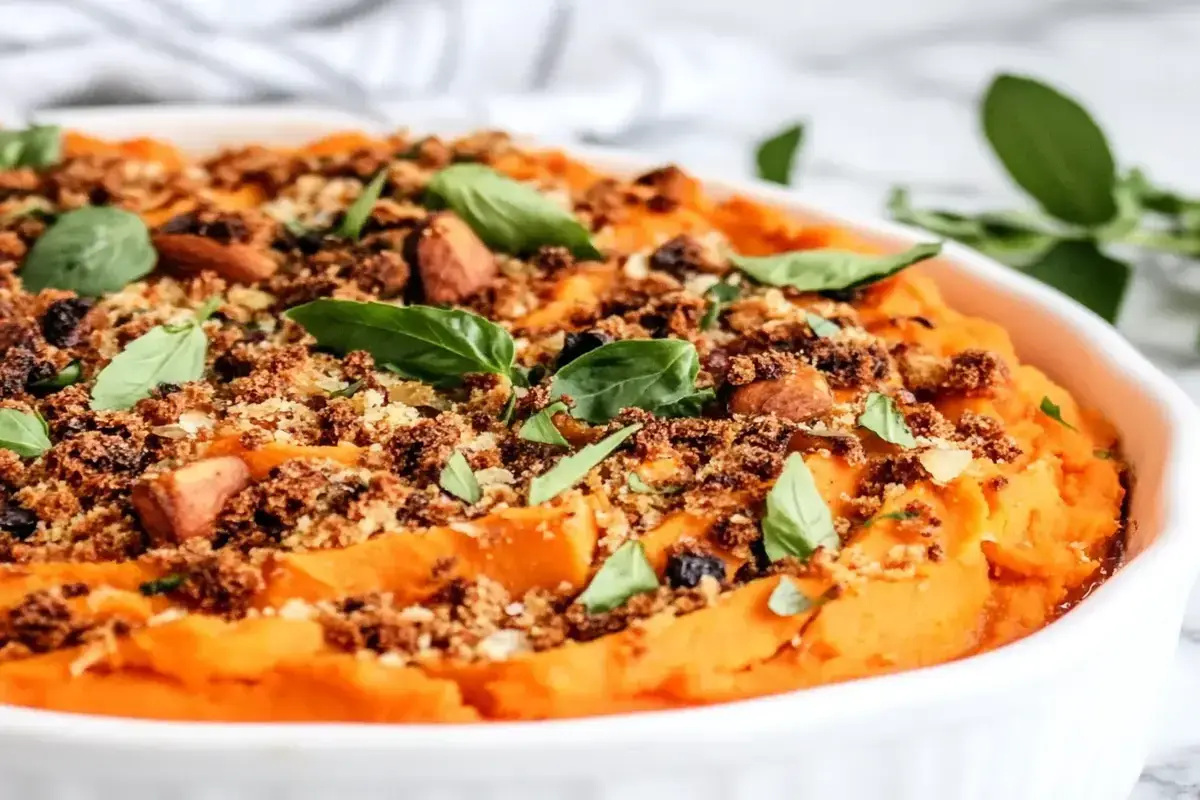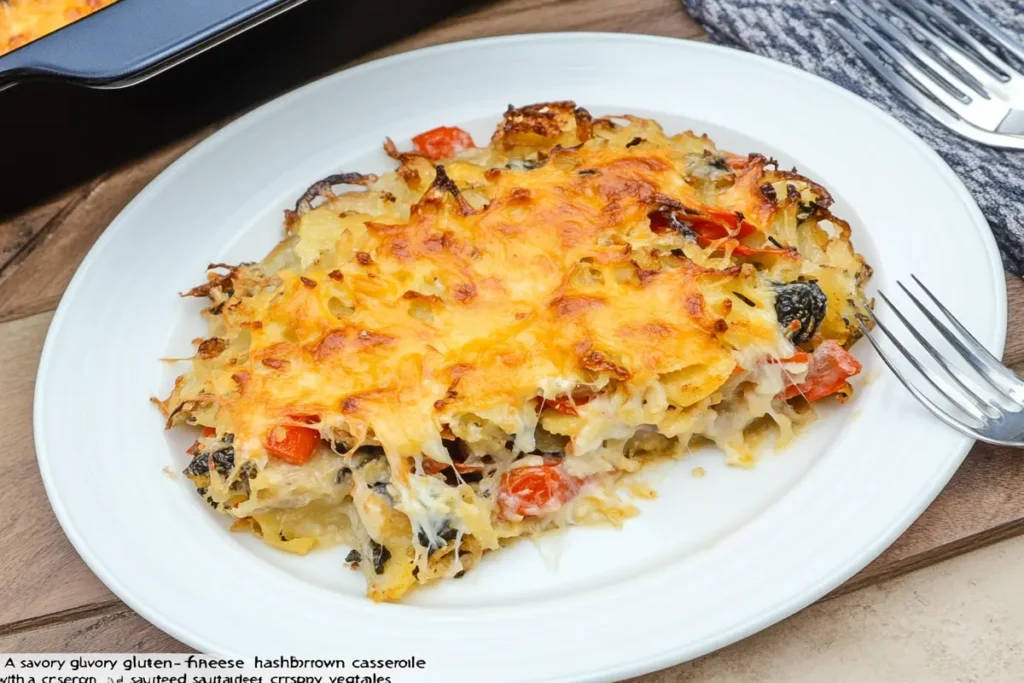Finding a delicious and healthy breakfast that meets dietary restrictions can be a challenge, but gluten-free breakfast casserole recipes are here to save the day! These casseroles are not only easy to prepare but also packed with nutrients and customizable to suit various tastes. In this article, we’ll explore everything you need to know about creating the perfect gluten-free breakfast casserole, from understanding key ingredients to troubleshooting common cooking issues. Whether you’re new to gluten-free cooking or a seasoned pro, you’ll find tips, recipes, and ideas to make mornings easier and tastier.
Understanding Gluten-Free Breakfast Casseroles
What Does Gluten-Free Mean?
Before diving into the world of gluten-free breakfast casserole recipes, let’s clarify what “gluten-free” actually means. Gluten is a protein found in wheat, barley, rye, and certain processed foods. For those with celiac disease or gluten sensitivities, consuming gluten can lead to discomfort or even serious health issues.
Gluten-free diets focus on avoiding these grains and replacing them with alternatives like rice, quinoa, or potatoes. Luckily, breakfast casseroles lend themselves beautifully to gluten-free adaptations because they’re naturally versatile and easy to customize with safe ingredients.
Why Breakfast Casseroles Are Perfect for Gluten-Free Diets
Breakfast casseroles are a match made in heaven for gluten-free eaters. Why? For starters, they’re incredibly adaptable. You can skip the bread entirely or swap it for gluten-free grains like rice or millet. Plus, ingredients like eggs, dairy, and veggies are naturally gluten-free, making them easy to incorporate.
Another bonus? These casseroles are ideal for meal prep. Bake one on Sunday, and you’ve got breakfast sorted for the entire week. With countless variations and combinations, you’ll never get bored. From savory options with bacon and cheese to sweet versions featuring sweet potatoes and cinnamon, the possibilities are endless.
Key Ingredients for Gluten-Free Breakfast Casseroles
Base Ingredients: Gluten-Free Grains, Potatoes, and Alternatives
The foundation of a great gluten-free breakfast casserole recipe begins with a solid base. Instead of traditional bread, opt for gluten-free grains like quinoa or rice. Potatoes, both sweet and white, are excellent substitutes as they add texture and depth while being naturally gluten-free.
Other options include gluten-free pasta or bread for those craving a more classic casserole texture. Look for certified gluten-free products to ensure no cross-contamination during processing.
Protein Options: Meat, Eggs, and Dairy-Free Alternatives
Protein is key to a satisfying breakfast casserole. Eggs are a staple, offering structure and richness to the dish. For a meat option, consider bacon, sausage, or even leftover roast chicken. Be sure the meats you choose are labeled gluten-free, as some may contain hidden additives.
For a vegetarian twist, use tofu or dairy-free cheese alternatives. These options keep the casserole hearty and suitable for different dietary preferences.
Veggies and Herbs to Boost Flavor
Fresh vegetables and herbs bring color and a punch of flavor. Bell peppers, onions, spinach, and mushrooms are popular choices. Herbs like parsley, thyme, or chives add freshness and balance to the casserole. The beauty of a gluten-free breakfast casserole recipe is its versatility—you can mix and match ingredients based on what’s in season or in your fridge.
For more ideas, check out the Gluten-Free Recipes Collection for inspiration on adding fresh veggies to your meals.
Step-by-Step Guide to Making a Gluten-Free Breakfast Casserole
Preparation Tips for Gluten-Free Baking
Preparing a gluten-free breakfast casserole recipe requires attention to detail. Start by greasing your baking dish to prevent sticking. Pre-cook ingredients like potatoes or meats to ensure even cooking in the oven. If using gluten-free bread or pasta, slightly undercook them beforehand to maintain their texture.
Another important step is ensuring all your ingredients are certified gluten-free. Even seemingly safe items like seasonings or broths can contain hidden gluten. Double-check labels for peace of mind.
Layering Ingredients for the Best Texture and Flavor
Layering is an art when it comes to breakfast casseroles. Begin with your base—potatoes, grains, or gluten-free bread. Follow with a layer of veggies, then sprinkle your protein of choice. Repeat as needed, ensuring each layer is evenly distributed.
Finish by pouring the egg mixture over the top. This ensures every bite is infused with rich flavor. Sprinkle cheese or a dairy-free alternative on top for a golden, bubbly crust.
How to Bake for Gluten-Free People
Baking a gluten-free dish to perfection is all about timing and temperature. Preheat your oven to 350°F (175°C) and bake the casserole uncovered for 30–40 minutes, or until the top is golden and the eggs are set. Insert a toothpick or knife into the center; if it comes out clean, your casserole is ready to serve.
Pro Tip: Let the casserole cool for 5–10 minutes before slicing. This helps it set, making it easier to cut into neat portions.
For more detailed baking tips, explore the Baking Tips for Gluten-Free People guide.
Popular Gluten-Free Breakfast Casserole Recipes to Try
Classic Egg and Cheese Casserole with Gluten-Free Bread
This timeless recipe is a favorite for its simplicity and comforting flavors. Start by layering cubed gluten-free bread a the bottom of a greased baking dish. Top it with a mixture of whisked eggs, milk (or a dairy-free alternative), and your favorite seasonings. Sprinkle shredded cheese and cooked sausage or bacon on top for a satisfying, savory bite.
Bake at 350°F (175°C) until the casserole is golden and the eggs are set, usually around 30–40 minutes. It’s a foolproof dish perfect for meal prep or feeding a crowd.
Dairy-Free Sweet Potato Breakfast Casserole
If you’re looking for a naturally sweet and hearty option, this recipe is a winner. Thinly slice or cube sweet potatoes and roast them until tender. In a casserole dish, layer the roasted potatoes, sautéed spinach, and diced onions.
Whisk together eggs, almond milk, and a touch of cinnamon or nutmeg for a subtle flavor boost. Pour the mixture over the layers and bake until firm. This dish is not only dairy-free but also a healthy, nutrient-packed choice.

Vegetarian Gluten-Free Hashbrown Casserole
For a vegetarian-friendly gluten-free breakfast casserole recipe, hashbrowns are a fantastic base. Spread a layer of gluten-free hashbrowns in your dish and top with a mix of sautéed bell peppers, onions, and mushrooms. Add shredded cheese or a plant-based alternative for extra flavor.
Bake until the hashbrowns are crispy and the cheese is bubbly. This casserole pairs wonderfully with fresh salsa or avocado slices for a vibrant morning meal.
For more inspiration, explore other breakfast ideas on the Gustoff Recipes website.

Common Mistakes and How to Avoid Them
Why Is My Egg Casserole Rubbery?
A rubbery texture is a common issue with egg-based casseroles. Overcooking is the main culprit. To avoid this, keep an eye on your casserole as it bakes. Once the eggs are set and no longer jiggle in the center, remove the dish from the oven. Overbaking can also cause a dry texture, so timing is crucial.
Additionally, ensure your egg-to-liquid ratio is balanced. Too many eggs and not enough milk or cream can result in a dense, rubbery dish. For best results, aim for about one cup of milk for every six eggs.
How to Prevent Dry or Overcooked Casseroles
Dry casseroles often stem from insufficient moisture or improper layering. Incorporate ingredients like sautéed vegetables, which release moisture as they cook. If your recipe includes gluten-free bread or grains, consider soaking them briefly in the egg mixture before baking to retain moisture.
Covering your casserole with foil for the first half of baking can also help lock in moisture. Remove the foil during the last 10 minutes to achieve a golden crust. With these tips, your gluten-free breakfast casserole recipes will turn out moist and delicious every time.
Expert Tips for Storing and Reheating
Can You Make a Casserole with Raw Eggs Ahead of Time?
Absolutely! One of the best things about gluten-free breakfast casserole recipes is their make-ahead potential. Preparing your casserole the night before can save you precious time in the morning. To do this, assemble all your ingredients in the baking dish, cover it tightly with plastic wrap or aluminum foil, and refrigerate overnight.
When you’re ready to bake, remove the dish from the fridge and let it sit at room temperature for about 20 minutes to ensure even cooking. Bake as directed, and your casserole will turn out fresh and flavorful.
Best Ways to Reheat Gluten-Free Breakfast Casseroles
Reheating casseroles without drying them out is key to enjoying leftovers. For single portions, use a microwave-safe dish and cover it with a damp paper towel to retain moisture. Heat on medium power in 30-second intervals until warmed through.
For larger portions, reheat the casserole in the oven. Preheat to 350°F (175°C), cover the dish with foil, and bake for 15–20 minutes or until heated. This method ensures the casserole remains moist and evenly warmed.
Pro Tip: Avoid reheating casseroles more than once to maintain their texture and flavor.
FAQs About Gluten-Free Breakfast Casserole Recipes
What Can I Eat for Breakfast If I Can’t Eat Eggs or Gluten?
For those avoiding both eggs and gluten, breakfast doesn’t have to be boring! Consider casseroles made with tofu or chickpea flour as an egg substitute. Sweet potato or zucchini can serve as a hearty base, while gluten-free grains like quinoa or oats add texture and nutrition.
Pair these alternatives with fresh vegetables and plant-based cheeses to create a dish that’s both satisfying and packed with flavor. These adjustments make it easy to enjoy a delicious gluten-free breakfast casserole recipe without eggs.
How to Bake for Gluten-Free People?
When baking for gluten-free eaters, it’s vital to check every ingredient for hidden gluten. Use certified gluten-free grains, bread, or flours to avoid contamination. Preheating your oven and greasing your baking dish properly are also essential steps to ensure even cooking and easy serving.
In addition, consider using naturally gluten-free ingredients like potatoes, vegetables, and dairy products. These items reduce the chance of error while adding rich, wholesome flavors to your casseroles.
Why Is My Egg Casserole Rubbery?
Rubbery casseroles often result from overbaking or an incorrect egg-to-liquid ratio. Stick to the recommended cooking time, and aim for a custard-like consistency in your egg mixture. Covering the casserole with foil during baking can help retain moisture and prevent the top from becoming too firm.
Can You Make a Casserole with Raw Eggs Ahead of Time?
Yes! Preparing casseroles with raw eggs in advance is not only convenient but also enhances the flavors as the ingredients meld overnight. Be sure to store your unbaked casserole in the fridge, tightly covered, and bake it fresh the next day for the best results.
Troubleshooting Common Issues in Gluten-Free Baking
How to Bake for Gluten-Free People Without Errors
Understanding how to bake for gluten-free people requires extra care and attention to detail. Cross-contamination is a significant concern, so always use separate utensils, baking dishes, and surfaces when preparing gluten-free meals. Be sure to clean your workspace thoroughly before starting to prevent any gluten residue from sneaking in.
Another common challenge is ensuring the texture of baked goods. Gluten-free casseroles can sometimes turn out dense or crumbly because gluten-free grains lack the elasticity of wheat-based ingredients. To overcome this, include moisture-rich ingredients like eggs, dairy, or plant-based milks in your recipes. These additions help bind the casserole and create a smoother consistency.
Pro Tip: Always double-check the labels on packaged ingredients to confirm they’re certified gluten-free, even for items like seasoning blends and sauces.
Why Some Casseroles Fail to Set Properly
One frequent issue with casseroles is a runny or undercooked center. This often happens when the egg-to-liquid ratio is off or the baking temperature isn’t consistent. To ensure even cooking, preheat your oven fully before placing the casserole inside. If your casserole still seems underdone, cover it with foil and bake for an additional 5–10 minutes. This traps heat and ensures the dish sets without overcooking.
if you enjoy baking, you might want to check out their Gluten-Free Breakfast Casserole
Creative Additions to Gluten-Free Breakfast Casseroles
Incorporating Unique Ingredients
Take your gluten-free breakfast casserole recipes to the next level by adding unexpected ingredients. For a burst of flavor, try roasted garlic, caramelized onions, or sun-dried tomatoes. If you’re looking to up the nutritional value, include kale, spinach, or quinoa for added fiber and protein.
Sweet casseroles are another creative option. Layer gluten-free oats or granola with fruits like apples, berries, or bananas, and finish with a drizzle of honey or maple syrup for a dessert-inspired breakfast. The combinations are endless, allowing you to customize each dish to your taste.
Making Casseroles Appealing for Everyone
Even if not everyone at the table eats gluten-free, these casseroles can still be crowd-pleasers. The key is to focus on bold flavors and hearty textures. For example, using crispy bacon, sharp cheddar, or smoked paprika can add depth to the dish. By emphasizing fresh, flavorful ingredients, your gluten-free breakfast casserole recipes will satisfy everyone, regardless of dietary restrictions.
To discover more unique ways to enhance your breakfast, explore the diverse recipe options on the Gustoff Recipes website.

